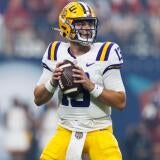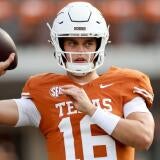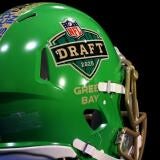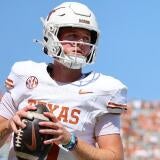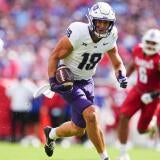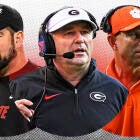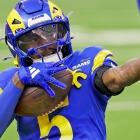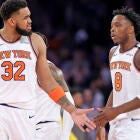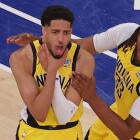
The pick is in. Two-way superstar Travis Hunter was drafted second overall by the Jaguars on Thursday night after a blockbuster trade with the Browns. Jacksonville paid a hefty price, too, which included the the fifth overall pick, its 2026 first-round pick and multiple mid-round picks in 2025.
With so much invested in Hunter, who is expected to play both ways in Jacksonville, this begs the question, how valuable will he be?
Does anyone really know how the Hunter two-way experiment will work in the NFL? Let's be honest: The answer is no.
The 2024 Heisman Trophy winner has a chance to be the NFL's first two-way player in several decades after logging 713 snaps on offense and 748 snaps on defense at Colorado last season, the most total snaps (1,484) in a college football season on record (data dates back to 2017).
Hunter is the only player in FBS history with 10-plus touchdown catches and five-plus interceptions in a career, and he had 1,258 receiving yards, 15 receiving touchdowns and four interceptions during the 2024 season alone.
Let's take a look at a few possible outcomes for his NFL career and how valuable he can be.
Deion Sanders is the blueprint
We first have to look to his college coach who set the standard, Deion Sanders.
First off, Sanders is a unicorn. He nearly made history as a two-sport player on Oct. 11, 1992, when he played in an NFL game in the afternoon and flew to join the Atlanta Braves in Game 5 of the NLCS that night (he never got in the game).
Fast forward to 1996, Sanders' eighth NFL season, but the first during which he wasn't also playing pro baseball. His Pro Football Hall of Fame teammate, Michael Irvin, was suspended for the first five games of the Cowboys' season, opening the door for "Prime Time" to become the NFL's first full-time two-way player since Chuck Bednarik in the early 1960s.
Sanders started all 15 games at cornerback and eight at wide receiver that season, still the only player to make at least three starts on each side of the ball in a season since the 1970 NFL-AFL merger, according to the Elias Sports Bureau. He intercepted two passes and had 36 receptions for 475 yards while becoming a first-team All-Pro selection.
As we attempt to draw comparisons to what Hunter "could" be, how do we quantify how valuable two-way production is? Pro Football Reference's Approximate Value metric (AV for short) is one way to do it. Think of it as a less sophisticated version of baseball's WAR -- a single-season value on any player at any position. It essentially divides credit among a team's players based on how good the team's offense and defense was and each player's statistical contributions and accolades.
As you can imagine, Sanders' 1996 season was off the charts. In fact, he was the most valuable player in the entire league by this metric. In fact, in the past 30 years, the only more valuable seasons by this measure among non-quarterbacks belong to 2006 LaDainian Tomlinson (NFL-record 31 touchdowns) and 1999 Marshall Faulk (1,000-plus rush yards and 1,000-plus receiving yards).
Highest approximate value in past 30 seasons by a non-QB
| AV | |
|---|---|
2006 LaDainian Tomlinson | 26 |
1999 Marshall Faulk | 25 |
1996 Deion Sanders | 23 |
2002 Derrick Brooks | 23 |
2020 Aaron Donald | 23 |
2000 Ray Lewis | 23 |
2002 Priest Holmes | 23 |
1995 Randall McDaniel | 23 |
2014 J.J. Watt | 23 |
Now, Sanders is considered by some to be the greatest cornerback in NFL history. So this type of production from Hunter is asking way too much, but you can see why teams would consider drafting him so high.
Imagine if Hunter could even provide Pro Bowl-caliber production on one side of the ball and be an average starter on the other? That would be absurdly impressive, so let's take a closer peek at what that could look like.
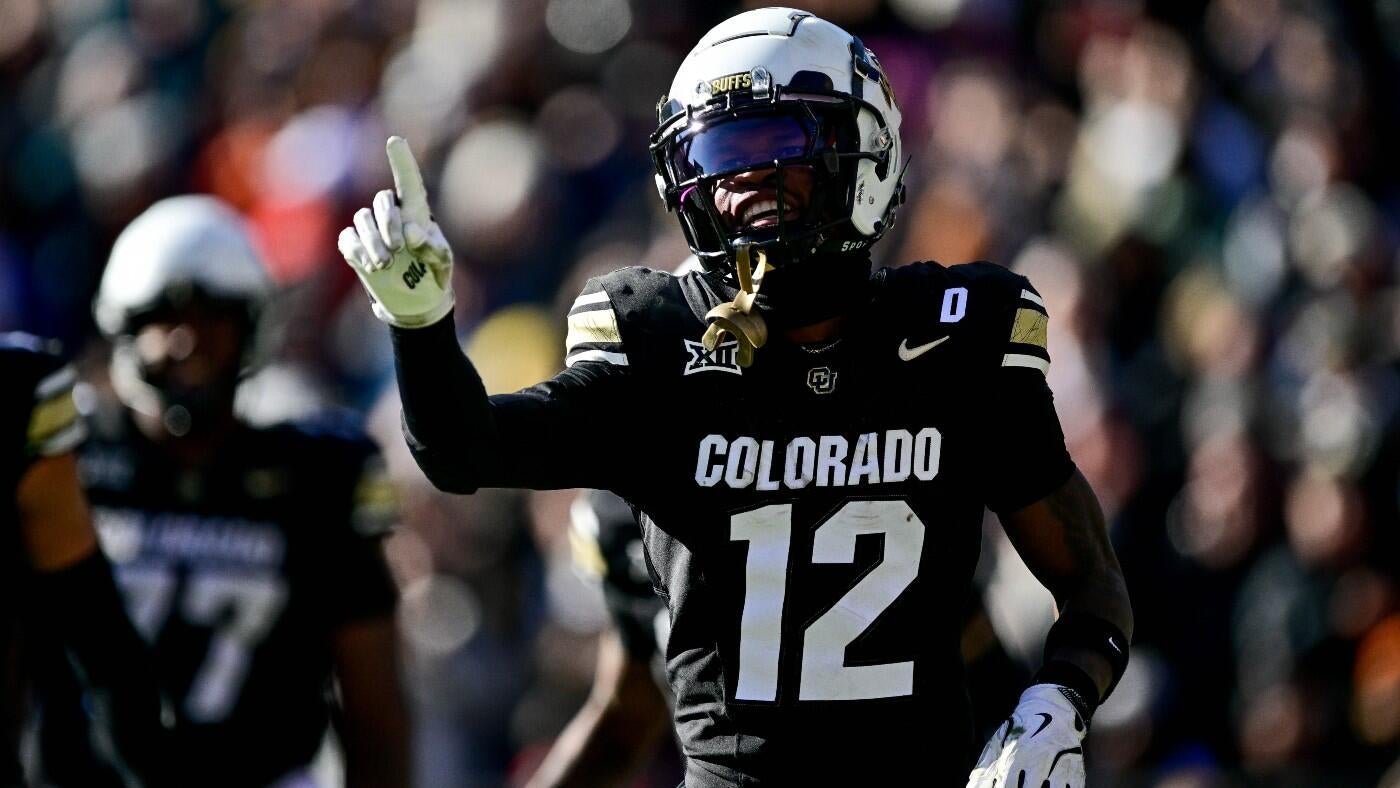
Potential outcomes for Travis Hunter playing two ways
Obviously there's a ton of outcomes for Hunter's career so let's focus on how good he could be for just one season.
1. Elite wide receiver and average starting cornerback
The first outcome we'll explore is Hunter playing like an elite wide receiver and average starting cornerback. Can you imagine if Hunter played wideout like Ja'Marr Chase and corner like Paulson Adebo did in 2024?
The combined AV of Chase and Adebo (19) would equal the most valuable non-quarterback in the league. The pair recently signed contracts worth a combined $58 million per year ($40 million for Chase and $18 million for Adebo). The only singular player who currently makes more is Dak Prescott ($60 million).
Here's a look at a few Pro Bowl wide receiver and average starting cornerback pairings from last season. Perhaps a combo that is more realistic (Chase off a triple crown year is setting our sights very high) would be Brian Thomas Jr. and Cam Taylor-Britt, who equaled the value of Myles Garrett last year.
2024 Pro Bowl wide receiver and average starting cornerback pairings
| WR | CB | Combined AV | Single Player Equivalent |
|---|---|---|---|
Ja'Marr Chase | Paulson Adebo | 19 | |
Brian Thomas Jr. | Cam Taylor-Britt | 17 | Myles Garrett |
17 | |||
15 | |||
14 |
2. Average starting wide receiver and elite cornerback
Let's reverse those roles now. If Hunter is an average starting wide receiver and an elite cornerback (the closest combination to 1996 Deion Sanders, but who are we kidding, nobody is Deion) he could be a two-in-one combination like Quentin Johnston and Derek Stingley Jr. The pair combined for what would be the most AV by any non-quarterback in 2024.
Here's four more combos, and we'll point out one more with Christian Watson and Marlon Humphrey. Their combined AV was the same as Saquon Barkley and Penei Sewell last year.
2024 average starting wide receiver and Pro Bowl cornerback pairings
| WR | CB | Combined AV | Single Player Equivalent |
|---|---|---|---|
Quentin Johnston | 21 | ||
Christian Watson | Marlon Humphrey | 18 | Penei Sewell |
Rashon Bateman | 17 | ||
15 | |||
15 | Patrick Surtain II |
3. Average starter at both positions
Now for an outcome that would disappoint any franchise and its fanbase that takes Hunter. What if he's an average starter on both sides? This is like getting the production of a Rashod Bateman and Kendall Fuller, who combined for an AV of 13 last season. That's the same figure as a singular player like Leonard Williams, Frankie Luvu and Dion Dawkins. It's good, but you'd hope for more from a top-five pick.
As you can see from the chart below, it's a considerable drop-off in AV from the above combinations where Hunter would theoretically be elite on one side.
Hard to imagine he would even be allowed to play multiple seasons both ways if he was not elite on at least one side.
2024 average starting wide receiver and cornerback pairings
| WR | CB | Combined AV | Single Player Equivalent |
|---|---|---|---|
Rashod Bateman | Kendall Fuller | 13 | Frankie Luvu |
Keon Coleman | Keisean Nixon | 13 | Leonard Williams |
Christian Watson | Cam Taylor-Britt | 12 | |
Tyler Lockett | Tariq Woolen | 11 | |
Quentin Johnston | Paulson Adebo | 10 |
4. Elite at both positions
Finally, the dream scenario for NFL teams and fans alike. What if Hunter is elite at both? Something the modern NFL has never seen and really only MLB has seen with Shohei Ohtani (and even that is a pipe dream because Ohtani has been the best hitter AND pitcher in baseball at times, a once-in-a-lifetime talent).
2024 Pro Bowl wide receiver and cornerback pairings
| WR | CB | Combined AV | Single Player Equivalent |
|---|---|---|---|
Ja'Marr Chase | Jaylon Johnson | 24 | 1970 Alan Page |
Marlon Humphrey | 23 | 2000 Ray Lewis | |
Terry McLaurin | Devon Witherspoon | 22 | 1998 Terrell Davis |
Nico Collins | Derek Stingley Jr. | 22 | 2009 Darrelle Revis |
That's like the Texans having one player who can produce like both Nico Collins and Derek Stingley Jr. Or the Ravens having one player who is Zay Flowers and Marlon Humphrey.
That produces the equivalent of a top-10 season in NFL history. For example, the combined AV of Zay Flowers and Marlon Humphrey last year (23) equals Ray Lewis' 2000 season when he won NFL Defensive Player of the Year to spearhead the Ravens' historic season on defense (which led to a Super Bowl).
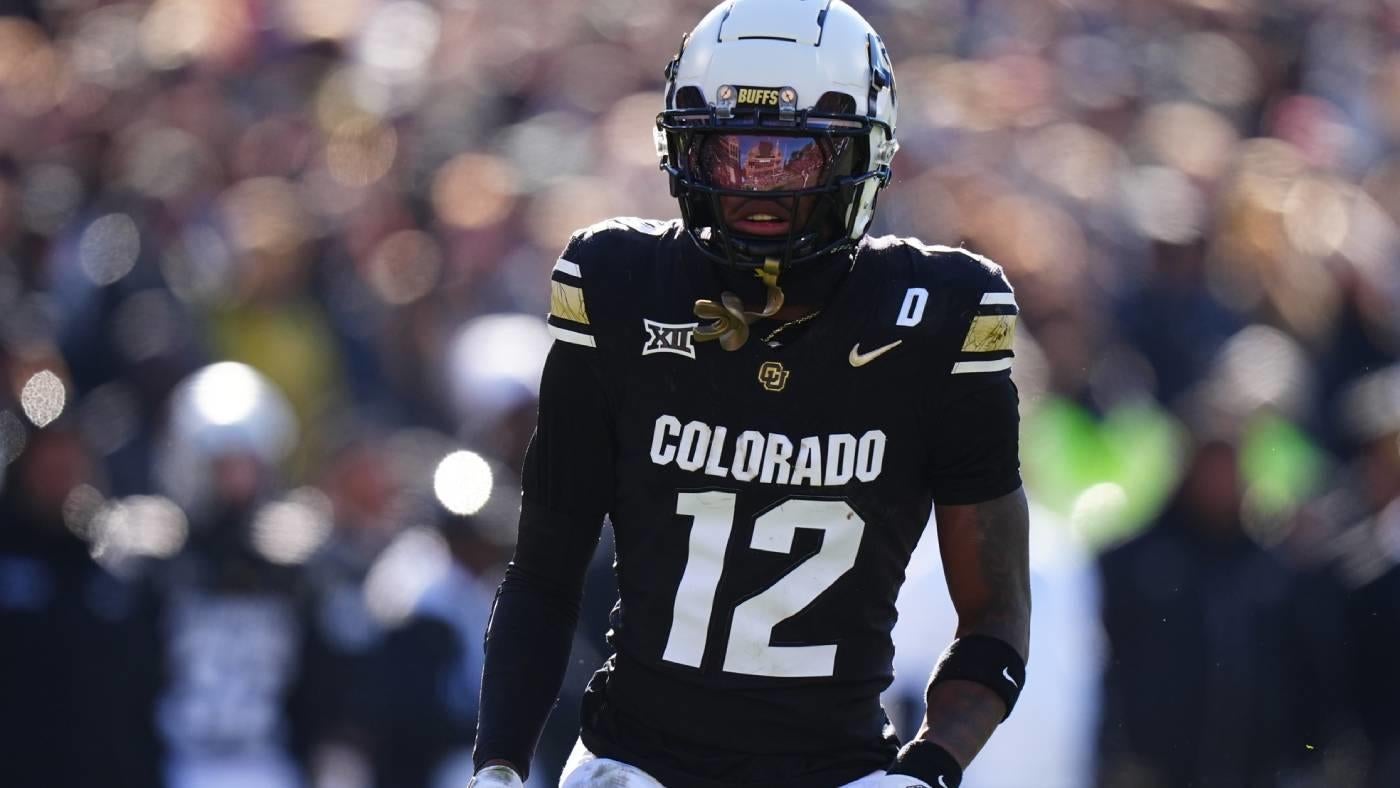
Challenges for Travis Hunter playing two ways
Of course, that only covers a few scenarios. Who knows, Hunter could be elite on one side but only receive a package of plays on another. The options are endless, and so are the challenges to pull this off.
It's tough enough to be an All-Pro on offense or defense when that's all you have to focus on and prepare for both mentally and physically. Hunter played 85% of Colorado's offensive/defensive snaps last season. With a 17-game NFL regular-season schedule, he would be looking at over 300 more snaps if he maintained that workload. That will require a physical toll unlike we've ever seen at the NFL level and the mastery of not one but two NFL playbooks that will be accompanied by twice the amount of film study and preparation for each game.
The Jaguars will need to put together a plan to get Hunter ready for gameday mentally and then recovered and ready for the next one physically. It'll have to deal with things no other team has to deal with. It'll have to figure out which position meetings he goes into during the week and which ones he does on his own with his position coach on the other side of the ball in order to be fully prepared for the game plan, play calls and adjustments on offense and defense each week. It'll have to create a practice schedule for him where he gets reps on both sides of the ball during position drills and with both the first-team offense and defense while also managing his reps so that he's as close to 100% as possible physically on Sundays.
The next question to be answered is how the Jaguars react both in-game and during the week when he struggles on one or both sides of the ball. When facing Stanford in 2023 in a 46-43 double overtime loss, Hunter had his worst career game on defense, allowing career-highs in receptions (11), receiving yards (158) and passing touchdowns (two) while in primary coverage.
He didn't let it affect him offensively, however, racking up a career-high 13 receptions for 140 yards and two touchdowns. Will he be able to block out the struggles on one side of the ball at the NFL level? And how do his position coaches communicate with him and help him make in-game adjustments while he's playing on the other side of the ball?
There's been players talented enough to play both ways, but the mental toll to play a significant amount of snaps on both sides of the ball might be the toughest aspect to all of this. Players like Sanders, Devin Hester, Charles Woodson, Champ Bailey, and Patrick Peterson famously contributed on both sides of the ball, but they were only able to receive a package of plays and schemes and were used situationally. With so many gifted players who are among the strongest and fastest in the sport, one would imagine that if their teams thought they were capable of handling the mental rigors of playing both ways, then they would've tried it by now.
Hunter showed he could handle the mental and physical toll in college. He also had the benefit of Sanders coaching him through it all with his extensive knowledge of playing both ways and also playing multiple sports at the same time. Now we wait to see if the Jaguars can put together and execute a plan that's never been done in the NFL before.
![[object Object] Logo](https://sportshub.cbsistatic.com/i/2020/04/22/e9ceb731-8b3f-4c60-98fe-090ab66a2997/screen-shot-2020-04-22-at-11-04-56-am.png)



